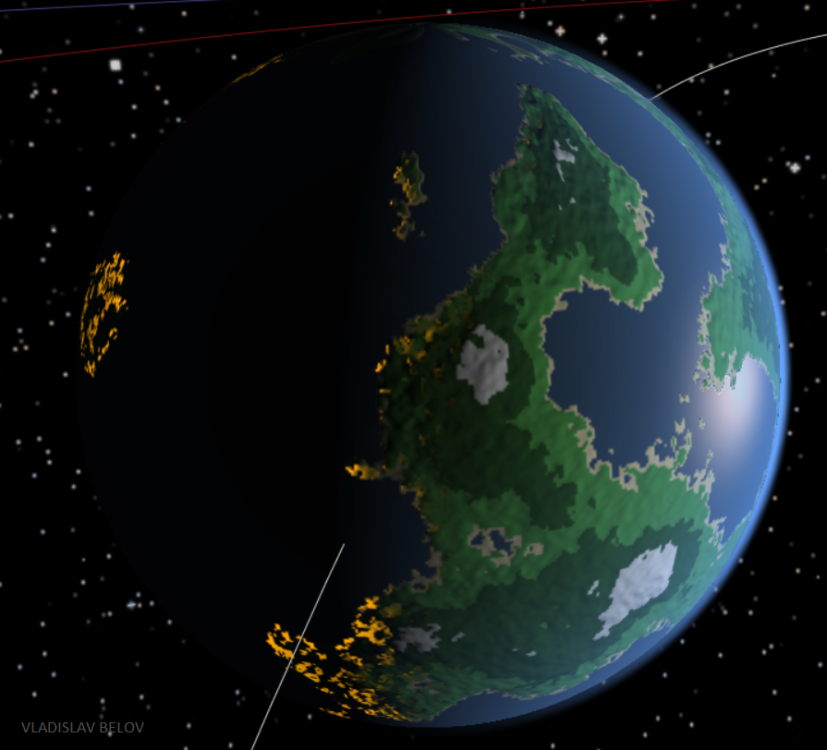-
Posts
1.403 -
Joined
-
Last visited
-
Days Won
24
Everything posted by vladislavbelov
-

==[Brainstorming]== for cheats units
vladislavbelov replied to Lion.Kanzen's topic in Eyecandy, custom projects and misc.
About animation, usually it means that there is a wrong path or name of the animations. I can't say more, I need more details (XML, paths) About transparency, which material do you use?- 198 replies
-
- 2
-

-
- brainstorming
- art
-
(and 2 more)
Tagged with:
-
I had it yesterday, I believe it was with GLSL. @Angen Did you have any warning/error during the game?
-
Besides possible leaks the consumed size of memory depends on many things: map size, game max population, game duration, amount of units, graphics quality. For ex. some games with 1.5hour duration, 2 players and 300 population limit on a small map may cost not more than 900MB.
-

Crash on Start up, GSLS and Post disabled, win 10, crash log included.
vladislavbelov replied to Drak0's topic in Bug reports
Sure, what step are you on in the instructions (https://trac.wildfiregames.com/wiki/BuildInstructions) ? You could also write PM to me. -
I used it as a first version of a planet procedural generation (not only, but mainly) in project with my friend more than 6 years ago:
-
Perlin noise? (at least I see familiar pattern of distribution).
-

Crash on Start up, GSLS and Post disabled, win 10, crash log included.
vladislavbelov replied to Drak0's topic in Bug reports
If you'd able to get SVN, apply the patch and compile the game then it'd be great (BuildInstructions). -

Crash on Start up, GSLS and Post disabled, win 10, crash log included.
vladislavbelov replied to Drak0's topic in Bug reports
Hi @Drak0 and welcome to the forum! Could you attach your system information (to see how the game detects it)? You may find it at the system_info.txt. Also we have a possible fix of the problem: D1789 (#5412). So it may have chance to be fixed in the next release. -
Hi @erickOtakuls500 and welcome to the forum! I suppose it happens on Windows, could you disable post-processing/GLSL in graphics options of the game?
-
Hi @weridetogether6 and welcome to the forum! Are you able to compile the game from sources? Also could you post specs of your computer? You can find it at log folder: GameDataPaths (wiki).
-
I suppose you can create an aura and assign it to a special tower. The effect looks like: { "value": "UnitMotion/WalkSpeed", "multiply": 0.5 } I don't remember, did we add an effect after death or not. The mine could destroy itself and give damage for all near enemies.
-
Cool! I think it'd interesting to add a slowing towers and ground mines.
-
The sky should work without any problem (even without hacks), but the good terrain is more complicated (I mean without really noticeable artifacts).
-
Nope, because we don't have a glow pass either HDR one (we increase the brightness only for the whole frame). But it'd pretty easy to add after GL1 drop (if we'd drop it x) ). Could you share a sample of the "oscilating shader"?
-
Nope I think D1954 shouldn't affect the redness. My patch doesn't solve the whole problem only not rendered blocks (patches).
-
This is my patch from #2692, it solves water blocks that we didn't render before because of scissoring.
-
I suppose @wraitii is right, because we didn't fix redness of scissoring yet.
-
Are you able to reproduce the issue each time (each run)? Also you could apply the following patch and compile the game: diff --git a/source/ps/VideoMode.cpp b/source/ps/VideoMode.cpp index 5cca5fe0d9..9d426f7690 100644 --- a/source/ps/VideoMode.cpp +++ b/source/ps/VideoMode.cpp @@ -246,7 +246,7 @@ bool CVideoMode::InitSDL() u16 ramp[256]; SDL_CalculateGammaRamp(g_Gamma, ramp); if (SDL_SetWindowGammaRamp(m_Window, ramp, ramp, ramp) < 0) - LOGWARNING("SDL_SetWindowGammaRamp failed"); + LOGWARNING("SDL_SetWindowGammaRamp failed: %s", SDL_GetError()); #endif m_IsInitialised = true; And then post the output of the warning here.
-

AI, Pathfinding and Performance
vladislavbelov replied to Crynux's topic in Game Development & Technical Discussion
Yes, that was an origin point. But it's not a silver bullet. Because the another layer of abstraction reduces flexibility, adds limitations and may reduce performance, because of many differences in backend APIs. We can't just add a IRenderer with methods like drawTriangle. Theoretically you can do this, but it would have a significant performance lose. You may add abstraction structures (like octree for frustum culling) that work for all types of backend. But some backend dependent stuff won't work easily. For ex. shaders, you need to use universal language or use some language converters. Which means another layer of limitations. So, what we could do (not a full list): 1. Use own graphics engine a) Use the only one backend API (like Vulkan or GLES) with some third party libraries (like libangle for GLES) that convert these API calls for other platforms (other than supported platforms by this backend). b) Use multiple backends (like you suggested) with run-time or compile-time backend changing. 2. Use third party graphics engine/library: a) Use a complete game/graphics engine (like Godot). b) Use a complete graphics library that has own stable API with own shader language. In only my opinion I'd prefer the 1a or 1b but with not more than 2 different backends, like OpenGL + Vulkan. Because they're Open-Source and present mostly for all platforms (through third-party libraries). Because it's most interesting for a graphics programmer: you don't need to support a lot of backends and you have enough power of the backends. But! It means that we need to handle some low-level stuff by ourselves. Like GPU blacklists, driver specific bugs (like our Intel crashes), and so on. That's harder to support. Complete engines have own problems too, they have less flexibility/performance or small number of supported platforms (some engines already dropped <= GL2). They may change their license or stop support it. Actually it's not the easy question. That's why I suggested to not rush inside rewriting all graphics stuff (while we somehow support most platforms) and refactor all related stuff first. I think the main task now is to collect and isolate most of GL code in some specific place (not just call them through simple proxy functions). That'd be useful for any way that we'd choose. -

AI, Pathfinding and Performance
vladislavbelov replied to Crynux's topic in Game Development & Technical Discussion
It's a good tool. I'm using it for a while. But it still misses some good features from RenderDoc, which doesn't support our GL unfortunately. We mostly use 1 draw call per each GUI element. It'd be good to refactor it and to use only 1-2 draw call per all GUI. -

[Resolved] Access violation reading 0x8801FF40
vladislavbelov replied to alchemy's topic in Bug reports
Also can it be the compatibility mode in Windows (where you can run an application with Windows XP compatibility)? -

[Resolved] Access violation reading 0x8801FF40
vladislavbelov replied to alchemy's topic in Bug reports
I'm not sure that's in the case. But we have wrong Windows version detection. We can't detect Windows 10 correctly. -
Exactly.
-
It's possible, but much more expensive. I don't think that we will have that until we drop all GL versions less than 3.



